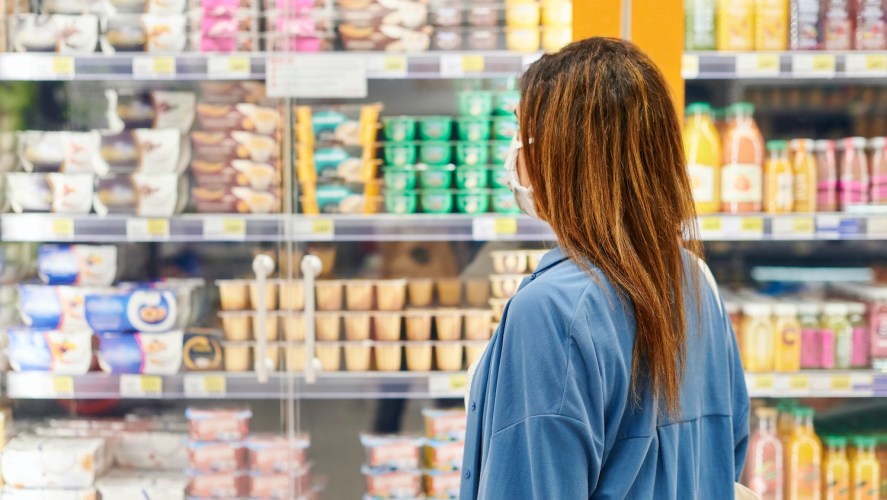In January 2020, only 5% of grocery purchases were made online. Then, COVID-19 arrived. Almost overnight, grocery stores and other businesses selling essential goods experienced an unprecedented spike in demand. Consumers faced empty shelves for some items and long lines due to social distancing measures. They turned to digital buying solutions and formed new behaviors. According to Statista, 31% are planning more in advance for their grocery needs. They even competed for time slots for curbside pick up and home delivery.
As restaurants and businesses reopen and consumers go back to work, grocery shopping will change again. The surges will slow, but certain behaviors are here to stay. In fact, 68% of U.S. shoppers say they expect to buy essential goods online after the threats of COVID-19 subside. Consumers will continue to rely on digital-first shopping and will expect special in-store considerations. Only this time, they will be less forgiving about subpar experiences.
These are the five lessons grocers can apply to their businesses going forward.
Lesson 1: Personalize shopping experiences
What someone buys during a pandemic may not reflect their typical buying habits. Between March 13-15, 44% of U.S. household grocery shoppers stocked up on essential supplies. Post-pandemic, normal purchasing habits will likely resume. Grocery shopping will go from a long-term play — in which consumers plan for groceries weeks or months in advance — back to a routine task for in-the-moment purchases.
As purchasing habits shift back, grocers will need to deliver personalized experiences to move more shoppers past transactions and build increased loyalty.
There are three ways grocery retailers can do this:
- Artificial intelligence (AI): AI learns from customer data to suggest relevant items based on past and recurring purchases. Connect AI to your customer relationship management (CRM) system to build tailored customer journeys across marketing, commerce, and service.
- Customer surveys: Surveys and quizzes let customers tell you exactly what they want — and when they need it. Create email surveys and a section on your site for feedback. Include questions on lifestyle and dietary restrictions to deliver new product options.
- Chatbots: Chatbot usage increased since COVID-19. Besides helping service teams scale, bots can provide curated information for customers. Use bots to set up order subscriptions and recommend products. Bonus: Bots make service agents more efficient because they free them up to focus on higher-value cases.
Lesson 2: Increase pickup options
Consumers will still want flexibility after shelter-in-place orders lift. Continue special considerations and services, including special pickup times and delivery options.
Take curbside pickup a step further. Reserve a certain number of spaces in your parking lot for pickup. Enable customers with an app to schedule their pickups and match them with a time and zone. Let them add their phone numbers to receive text updates. Text ahead of time with a pickup reminder and special instructions. You can also add staff to assist with curbside pickup zones by maximizing self-checkout lanes inside the store. Lastly, be sure to embed service so customers can connect with an associate and ask any questions.
Third-party delivery partners will continue to play an integral role. Find ways to evolve the partnership to continue to offer at-home delivery options. For example, make it easier for customers to receive items through subscription-based delivery from the store. Or explore automated vehicles for in-town deliveries.
Lesson 3: Partner with restaurants for wider reach
Restaurants were hit hard during COVID-19 and were quick to collaborate to create new revenue streams. Offer support to the industry by using your business as a platform for change. Create strategic partnerships with restaurants to make a positive impact.
To do this, consider offering ready-made or heat-and-serve restaurant meals. Then cross-promote to both restaurant and grocery customers for maximum reach. If there’s a bundled meal for Taco Tuesday, customers could click one button and add the ingredients to their cart. This expedites the service and creates a seamless experience.
Another approach is to co-create digital content such as recipes, how-tos, and blogs to increase consumer engagement between purchases. For example, a restaurant that features recipe content on its website can link to online grocery ordering.
Lesson 4: Empower associates to reduce contact risks
During the pandemic, store associates, warehouse workers, and delivery drivers became frontline heroes. Consumers trust and respect companies that recognize and fairly compensate these employees. According to a recent survey, after discounts, safety of employees was the top influencer for shopper purchases and loyalty.
When states reopen, frontline employees will be tasked with even more safety measures. Empower associates to handle customer questions while reducing contact and risk. For smaller grocers, this may mean scheduling appointments for at-risk in-store shoppers. For larger grocers, formalizing training on proper safety and social distancing protocol is key for one-to-one interactions.
Many grocers are implementing ways to reduce employee contact with customers such as encouraging shoppers to pay by card and use self-checkout. Safety screens and increased sanitizing can also protect workers.
Lesson 5: Change how you track inventory
Long delivery times and order substitutions marred the COVID-19 shopping experience. Post-crisis, consumers will have less patience for delays and inconsistencies.
To get ahead of expectations, track inventory the day of the order, not the day of delivery. Remove ordered items from the inventory system and keep them in the back of the store or in a dedicated section of your warehouse. If a customer tried to order an item but it was out-of-stock, notify them if it becomes available before their delivery time, so they can add it.
Evaluate order management capabilities as well. Ingest orders from online and route them to the correct store locations.
Prepare for new shopping habits, future disruptions
While the future is uncertain, digital commerce will be increasingly important for both large grocers and small shops. Small grocers may actually have an agility advantage without disparate, legacy systems.
Grocery retailers will begin to focus on transformational projects to prepare for future disruptions. Such projects don’t have to take months or even years. For example, the Salesforce Commerce Cloud Quick Start for Grocery and Food Service is a tailored, out-of-the-box solution has everything you need to offer buy online, pickup curbside experiences.
Get more tips, thought leadership, and resources with our Leading Through Change series.




























